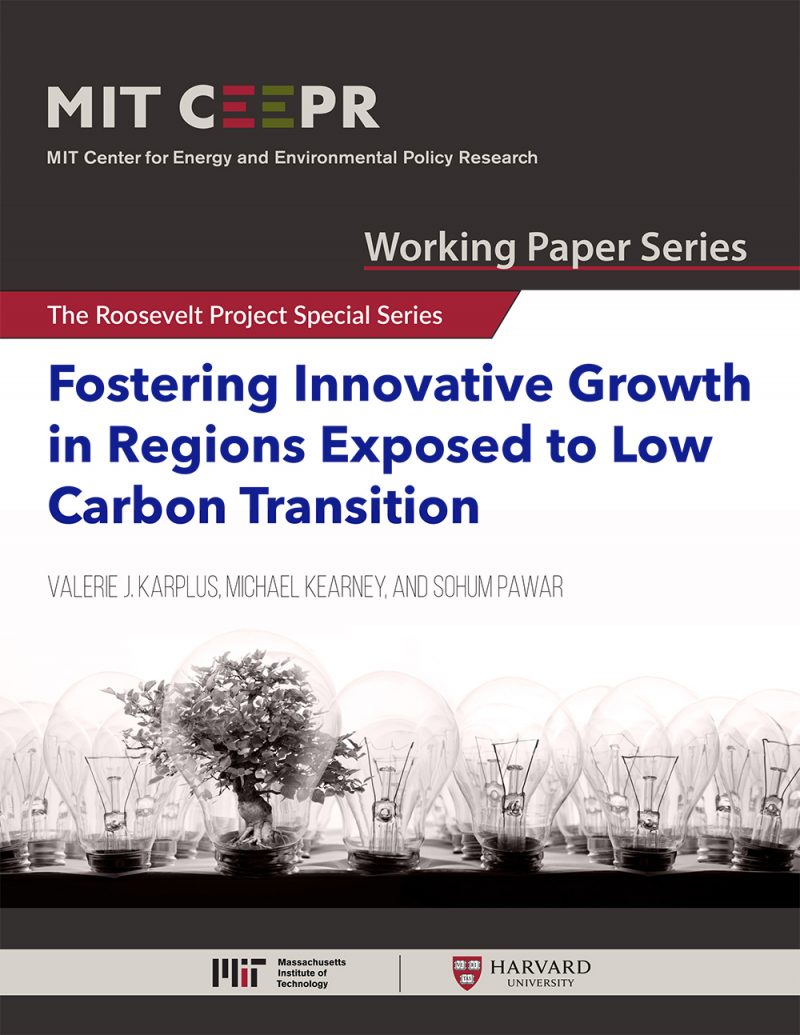Fostering Innovative Growth in Regions Exposed to Low Carbon Transition
Valerie J. Karplus, Michael Kearney, and Sohum Pawar
September 2020
Sources of innovative growth have the potential to mitigate the localized adverse impacts of a low-carbon energy transition. Transitions themselves may contribute new activities related to clean energy. To explore this potential, we examine the relationship between transition exposure and regional innovation in the United States. We find that innovative activity is generally weak in areas exposed to transition, especially in those places with high shares of fossil fuel extractive industry employment. Using case studies, we evaluate the experiences of diverse efforts to systematically strengthen regional innovation systems, with a focus on clean energy and manufacturing. In each case, we look for evidence of five entrepreneurial competencies, and characterize the number and criticality of the gaps in these competencies. We then examine the ways that each case intervention has addressed these gaps. We find that interventions that address critical, but not necessarily more, gaps are effective. Buy-in from multiple stakeholders who share an interest in sustaining an intervention, and building on existing local capabilities are also antecedents of success.



